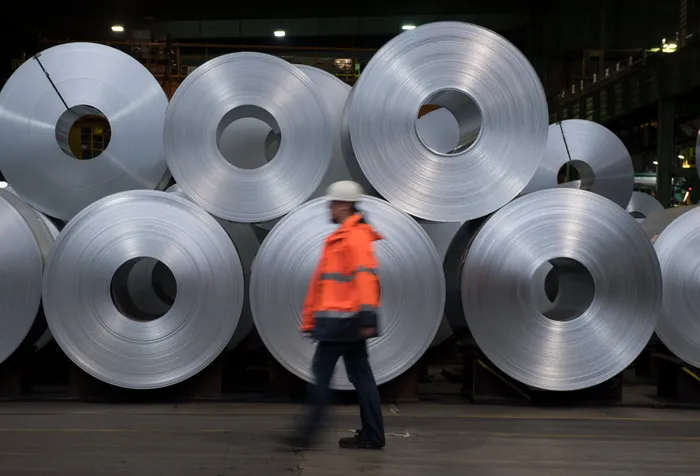Global steel forum ministers call for market-based reforms as oversupply threatens industry
STEEL MANUFACTURING

South Africa’s steel manufacturing industry remains a key manufacturing cog and driver of infrastructure development, despite the numerous challenges the sector has faced with rising imports and logistics challenges.
Image: EPA
Tawanda Karombo
South Africa and other member countries of the Global Forum on Steel Excess Capacity (GFSEC) have agreed to adopt market-based principles to tackle the persistent global oversupply of steel, which continues to pressure domestic industries through a surge of cheap imports.
Ministers from steel-producing countries under the GFSEC met in Gqeberha on Friday and resolved to recognise “the importance of steel supply chains and the need for them to operate based on market” principles.
Mervyn Naidoo, CEO of Actom and new president of the Steel and Engineering Industries Federation of Southern Africa (SEIFSA), said last week that the steel industry in South Africa will “advocate for procurement models and investment strategies that favour localisation, skills development and long-term” sustainability.
South Africa’s steel manufacturing industry remains a key manufacturing cog and driver of infrastructure development, despite the numerous challenges the sector has faced with rising imports and logistics challenges.
While the government has been engaging steel producers such as ArcelorMittal South Africa (Amsa), the global ministers that attended the meeting have committed to joint efforts to address policies and practices that are threatening the steel industry globally.
In South Africa, the steel industry under SEIFSA recognises that infrastructure enables economies to grow, industries to flourish, and societies to thrive.
“In South Africa, the urgent need to rebuild, expand, and modernise our infrastructure presents one of the greatest industrialisation opportunities of our generation,” according to Naidoo.
On their part, the GFSEC ministers agreed to kickstart development of a comprehensive framework for joint actions to address the global steel crisis with a view to agreeing on key elements by June 2026.
“Ministers further agreed that GFSEC Members should take immediate actions, where possible, to address global steel excess capacity and its impacts on steel-producing countries,” they said after the meeting.
South Africa was expected to present preliminary findings of a review into steel tariffs, a move largely seen as a protection of the local industry from intensifying imports.
The review would be helpful for companies battling cheaply imported steel products such as Amsa, which has been nudging the government to review its policies for the steel industry.
China is seen as a major contributor to the global steel oversupply. The Asian giant was poised to expand capacities in foreign steel markets. Since 2010, China has added 103 million metric tons of steelmaking capacity abroad.
In the first half of the current year, there has been a notable upward trend in global excess capacity, with recent developments showing that steel excess capacity grew by 15.9 million metric tons or by 5.6% compared to the first six months of 2024.
“The underlying trend was mainly driven by a strong increase in non-GFSEC members’ capacity of 31.9 million metric tons in conjunction with a notable decrease in global demand estimated at 14.6 million metric tons from 2023 until early 2025. China continues to drive this trend,” noted a report by GFSEC.
Worse still, short-term indicators suggest that there will be continued excess capacity growth in the coming quarters, exacerbated by weak economic trends.
This, said GFSEC, has implications for international markets, taking into consideration the size of China’s steel industry in global capacity of 46.2%, 54.6% in terms of production and 31.6% in exports.
Global steel excess capacity is thus expected to rise from 601 million tons in 2024 to 721 million tons by 2027, reaching its highest level in a decade and exceeding the current combined production of GFSEC members by 248 million tons.
BUSINESS REPORT